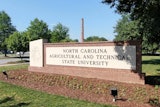WASHINGTON
Interest among American students of all races and ethnicities in the fields of science, technology, engineering and mathematics (STEM) has dissipated over the last several years. As a result, the pipeline of American engineers has dwindled. In a new report, the National Action Council for Minorities in Engineering (NACME) asserts that the rates of participation among underrepresented minorities in STEM fields have flat-lined, and in some cases declined.
The report titled “Confronting the ‘New’ American Dilemma” reveals that fewer than 12 percent of baccalaureate engineering graduates in the United States are underrepresented minorities, suggesting that only a meager few will matriculate through the various levels of graduate academia to become faculty members or STEM professionals.
Certainly, since the Civil Rights Movement underrepresented minorities have made some progress in gaining access to engineering, however engineering colleges continue to produce graduates who are disproportionately White and male, despite the proportion of ethnic minorities among college-going students.
Innovation, invention and technology fueled the American economy for more than a century. In the ’50s during the Sputnik era, the American government invested heavily in the STEM fields creating the National Science Foundation and the National Aeronautics and Space Administration to compete with the scientific rigor of other countries.
To ensure that the global competitiveness of the United States persists into the future, the nation “must bring young underrepresented minorities in the STEM fields in dramatically increased numbers,” says Dr. Irving Pressley McPhail, executive vice president and chief operating officer for NACME. “There is a solution to America’s endangered competitiveness, and NACME is ready to work with government, education and business individuals to achieve it.”
Among several recommendations, McPhail says that STEM officials, educators and policymakers must pursue an agenda that removes social and financial barriers and builds bridges for underrepresented minorities. In addition, special programs need to be created to support and retain underrepresented minorities as they go through college.
According the report, the percentage of bachelor’s degrees in engineering awarded to Black students between 1995 and 2005 declined. In 1995, engineering degrees accounted for 3.3 percent of bachelor’s degrees awarded to Black graduates, by 2005 this number decreased to 2.5 percent.
In response to the report, Rep. Eddie Bernice Johnson, D-Texas, a NACME supporter, says, “We must look out for America’s strength in the global economy. To do that, we must encourage untapped resources into the STEM pipeline. Many of our minority youth are not prepared to take on jobs in critical science and engineering fields.”
In its report, NACME highlights the “4 percent problem,” which is that only 4 percent of underrepresented minorities who graduate high school are “engineering eligible.”
A major problem among low-income and historically disadvantaged students, suggests Dr. Lisa Frehill, executive director of the Commission on Professionals in Science and Technology and
author of the report, is the availability of advanced math and science classes and qualified instructors.
In 2002, 690,000 minority students graduated from high school, but only about 28,000 had taken the necessary math and science courses to fully qualify for engineering studies.
“In some cases, students have literally demanded math and science classes,” Frehill says. “As a nation, we have to address the inequalities in K-12 education.”
NACME is actively working with K-12 educators in low-income and minority neighborhoods to generate interests in STEM fields among young people. “The key is reaching students early. NACME begins working with students in middle school. Speaking to parents is also importantant,” said John Lubbe, vice president for institutional advancement at NACME, noting that many minority families are unaware of the benefits that an engineering education can afford.
To assist students and parents in looking for more information, NACME released a NACME Guide to Engineering School. The guide officers practical pointers to students interested in pursuing a career in engineering. The guide features information on every accredited engineering school, including the racial make-up of the institution as well as information on scholarships and grants.
This year, NACME also awarded more than 30 NACME STEM Innovation grants worth $1,000 each to K-12 teachers in schools all over the country.
According to the report, only about 1.3 percent of the available pool of minority high school graduates earn engineering degrees from America’s colleges and universities each year.
Though Hispanics are expected to account for 25 percent of the U.S. population by the mid-21st century, the gap in educational attainment for Hispanics relative to Whites has widened. Data also suggest that Hispanics are losing interest in engineering and are opting to pursue other fields of study such as business and the social sciences.
American Indian faculty are also a rarity in the STEM fields. According to the report, American Indians compose less than 1 percent of engineering faculty, and only one engineering college dean in the United States is known to be American Indian.
Click here to post and read comments
© Copyright 2005 by DiverseEducation.com















